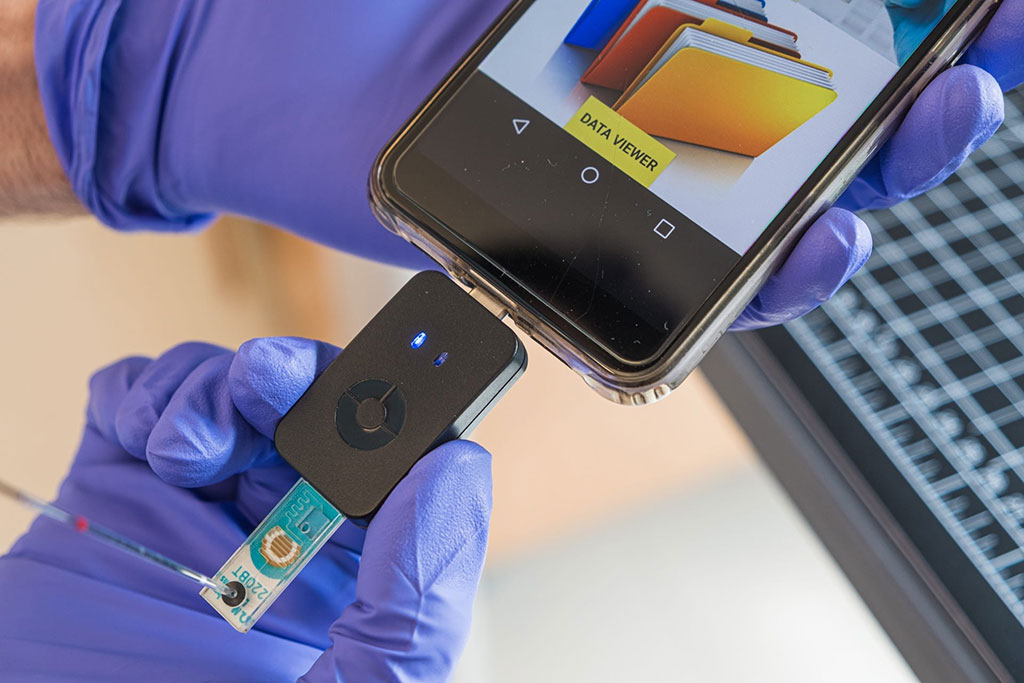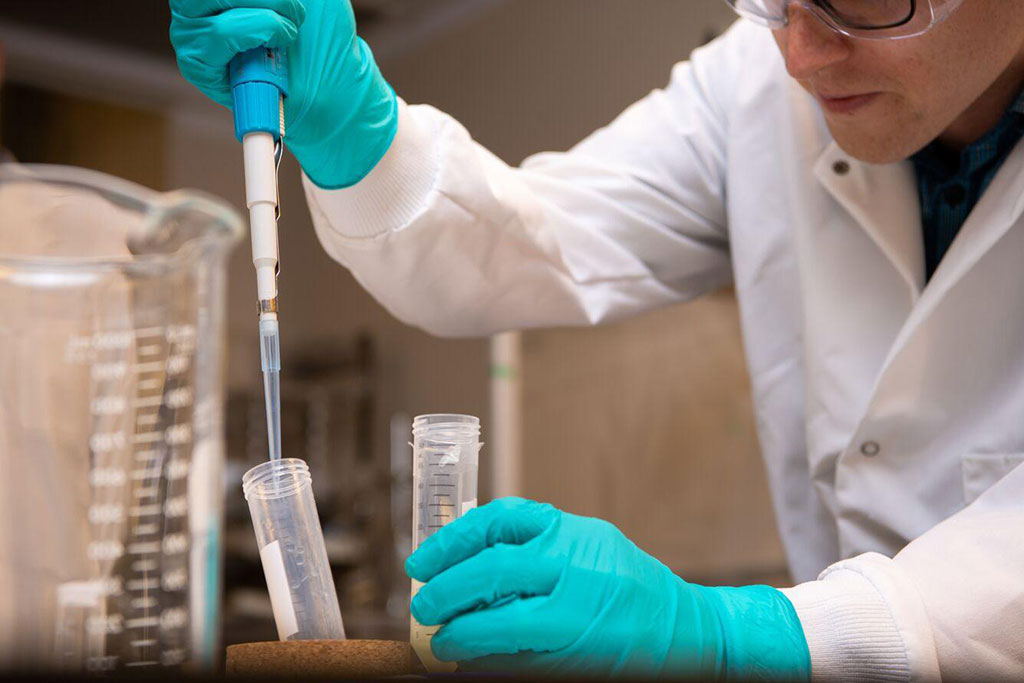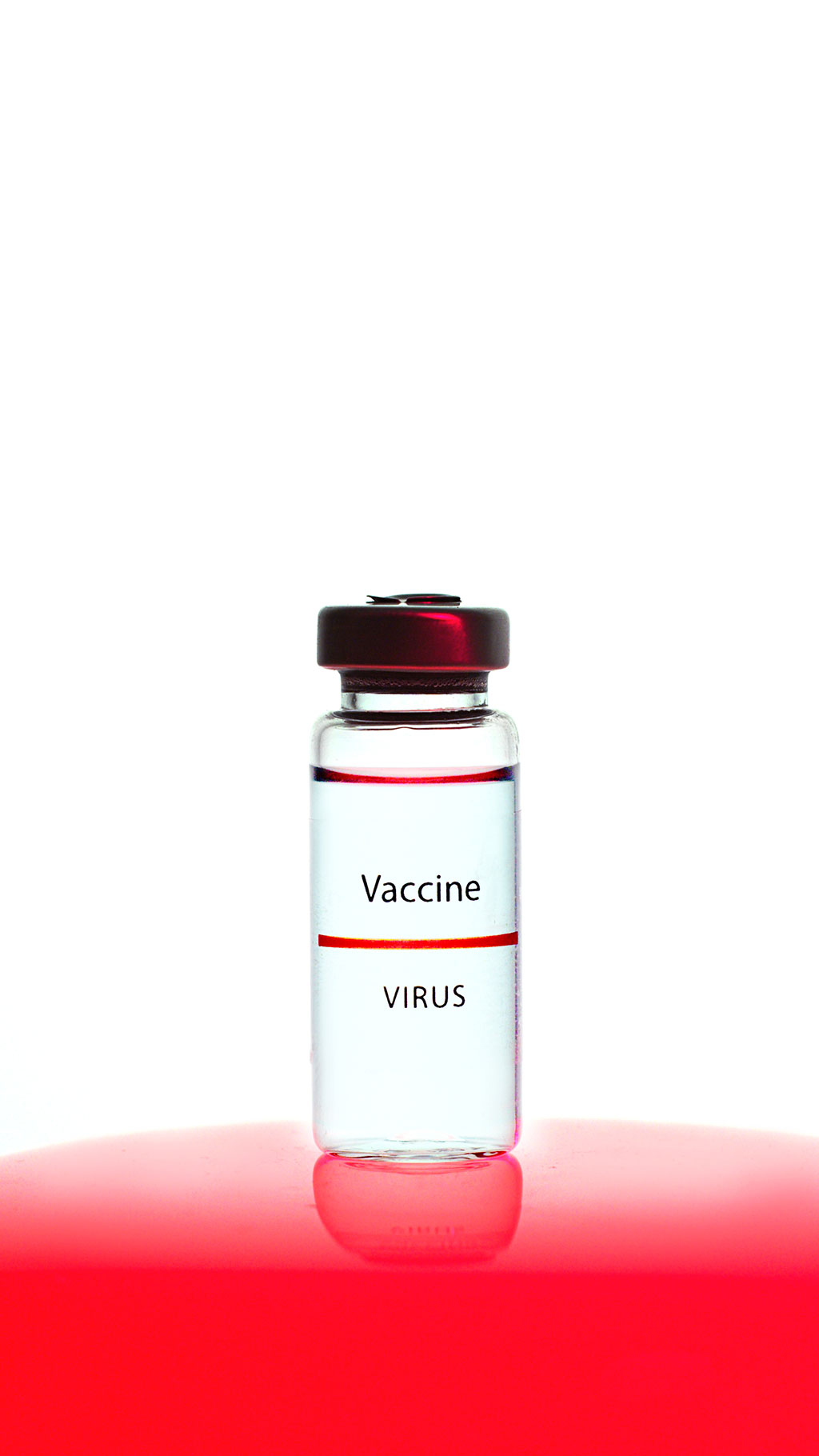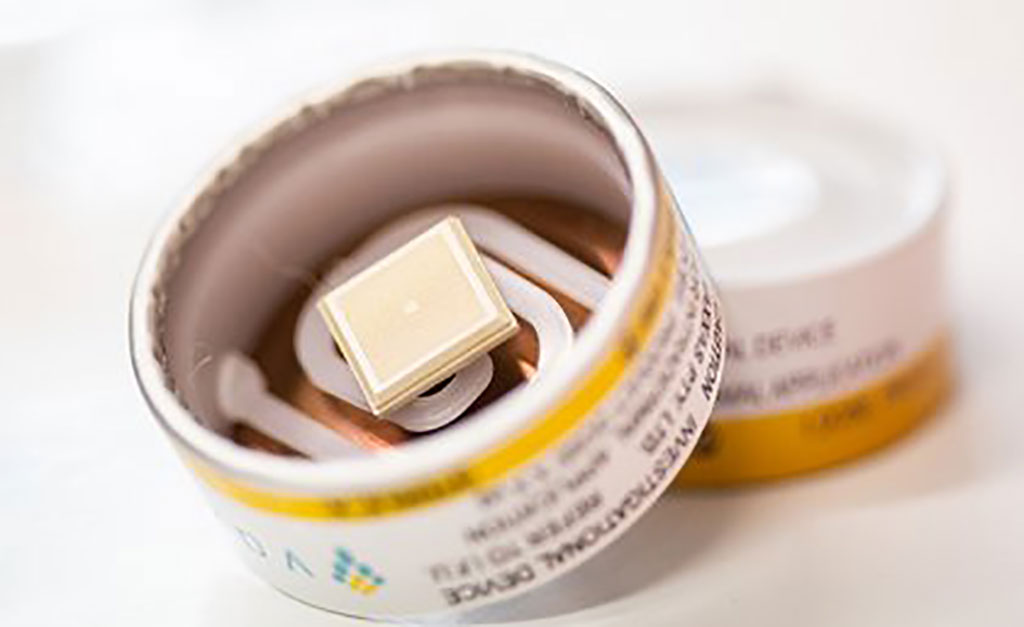Stamp-Sized Microfluidic Chip Uses Programmed Magnetic Nanobeads and Off-the-Shelf Cellphone to Diagnose COVID-19
By HospiMedica International staff writers
Posted on 26 Feb 2021
A new testing system uses programmable magnetic nanobeads, an off-the-shelf cellphone and a plug-in diagnostic tool to diagnose COVID-19 in 55 minutes or less.Posted on 26 Feb 2021
Researchers at Rice University (Houston, TX, USA) have developed a stamp-sized microfluidic chip that measures the concentration of SARS-CoV-2 nucleocapsid (N) protein in blood serum from a standard finger prick. The nanobeads bind to SARS-CoV-2 N protein, a biomarker for COVID-19, in the chip and transport it to an electrochemical sensor that detects minute amounts of the biomarker. The researchers argue their process simplifies sample handling compared to swab-based PCR tests that are widely used to diagnose COVID-19 and need to be analyzed in a laboratory.

Image: Stamp-sized microfluidic chip (Photo courtesy of Jeff Fitlow)
The new tool relies on a slightly more complex detection scheme but delivers accurate, quantitative results in a short amount of time. To test the device, the lab relied on donated serum samples from people who were healthy and others who were COVID-19-positive. According to the researchers, a longer incubation yields more accurate results when using whole serum. The lab found that 55 minutes was an optimum amount of time for the microchip to sense SARS-CoV-2 N protein at concentrations as low as 50 picograms (billionths of a gram) per milliliter in whole serum. The microchip could detect N protein in even lower concentrations, at 10 picograms per milliliter, in only 25 minutes by diluting the serum fivefold. Paired with a Google Pixel 2 phone and a plug-in potentiostat, it was able to deliver a positive diagnosis with a concentration as low as 230 picograms for whole serum.
A capillary tube is used to deliver the sample to the chip, which is then placed on a magnet that pulls the beads toward an electrochemical sensor coated with capture antibodies. The beads bind to the capture antibodies and generate a current proportional to the concentration of biomarker in the sample. The potentiostat reads that current and sends a signal to its phone app. If there are no COVID-19 biomarkers, the beads do not bind to the sensor and get washed away inside the chip. The researchers believe that it would not be difficult for industry to manufacture the microfluidic chips or to adapt them to new COVID-19 strains if and when that becomes necessary.
“What’s great about this device is that doesn’t require a laboratory,” said Peter Lillehoj, a mechanical engineer at Rice lab where the system was developed. “You can perform the entire test and generate the results at the collection site, health clinic or even a pharmacy. The entire system is easily transportable and easy to use.”
Related Links:
Rice University














